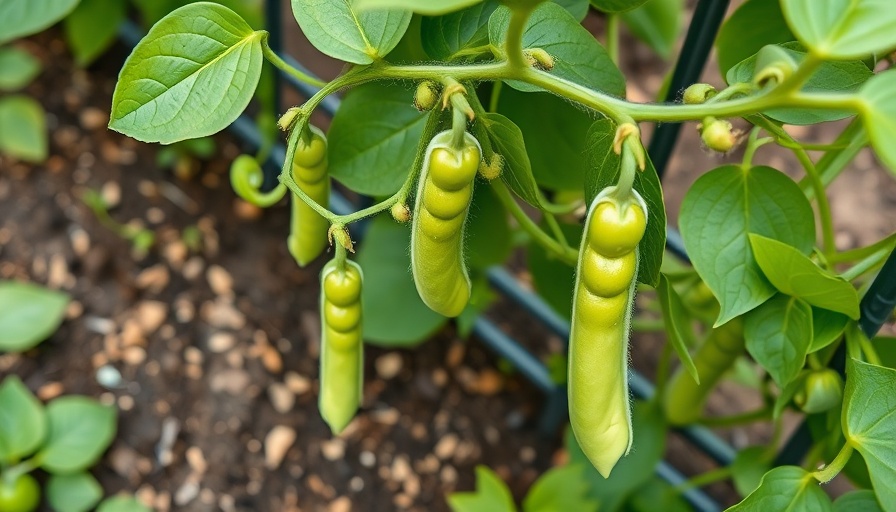
Transform Your Garden: Climbing Veggies for Limited Spaces
In today’s fast-paced lifestyle, maximizing both taste and space in your garden has never been more critical. Enter edible vining plants, a delightful solution that allows homeowners to turn fences and walls into lush green pantries. From refreshing cucumbers to hearty beans, these climbing veggies not only save space but also provide a bountiful harvest full of flavor and nutrients.
Why Vining Plants? The Perfect Solution
Imagine transforming your backyard into a veritable grocery store while adding a splash of greenery! Vining vegetables are your ticket to achieving both beauty and functionality in your outdoor space. Freshly grown, these plants usually outperform store-bought counterparts in taste and nutritional content, ensuring you consume the healthiest options available. Plus, the joy of harvesting your own food is unparalleled, making each meal special.
Cucumbers: The All-Star Climber
Cucumbers are not just refreshing; they’re resilient climbers. With varieties like ‘Spacemaster’ and ‘Bush Champion,’ even those with limited gardening space can enjoy a crisp harvest throughout the summer. These plants flourish in full sunlight, requiring at least six to eight hours each day for optimal growth. Their tangy flavor and crunchy texture make them a perfect addition to salads and summer dishes, bringing that farmer's market taste right to your plate.
From Peas to Squash: A Climbing Variety
What’s better than cucumbers? Adding peas and squash to the mix! Peas not only offer a sweet crunch but are also packed with vitamins and can thrive in cooler conditions, providing versatility for different climates. On the other hand, squash, with its rich flavor and variety of uses, is not just beautiful; it’s practical—adding both color and sustenance to your garden.
Creating Space While Eating Fresh
The idea of growing vertically may seem simple, yet the benefits are profound. Homeowners can enjoy a lush garden without sacrificing valuable ground space that could be utilized for other plants, flowers, or herbs. This space-saving gardening technique emphasizes the unity of functional and aesthetic appeal—creating areas of interest while maintaining accessibility in your yard.
Harvesting Tips for the Best Yield
Maintaining vining plants requires diligence, but the rewards are plentiful. To ensure an optimum harvest, provide adequate sunlight, well-drained soil, and consistent watering—about one inch per week. Plants like cucumbers thrive when trained upwards on trellises, not only boosting productivity but also keeping fruits off the ground, preventing rot and pest issues.
Brainstorming Recipes: Enjoying the Fruits of Your Labor
Now that your garden is thriving, what to do with all that bounty? Imagine tossing freshly harvested cucumbers into a refreshing salad or sautéing seasonal squash with herbs for a delightful side dish. The versatility of these climbing veggies allows for countless culinary innovations, making meals exciting and healthy.
Final Thoughts: Embrace Your Garden’s Potential
Incorporating climbing vegetables into your garden plan can transform not just your space but also your lifestyle. From flavor to health benefits, each plant contributes uniquely to your table and environment. Why not take the plunge? With seeds, trellises, and a little nurturing, you can turn your outdoor area into a thriving and delicious escape.
So what are you waiting for? Roll up those sleeves, gather your supplies, and start planting! The opportunity for fresh, homegrown edibles is just outside your door.
 Add Row
Add Row  Add
Add 




Write A Comment